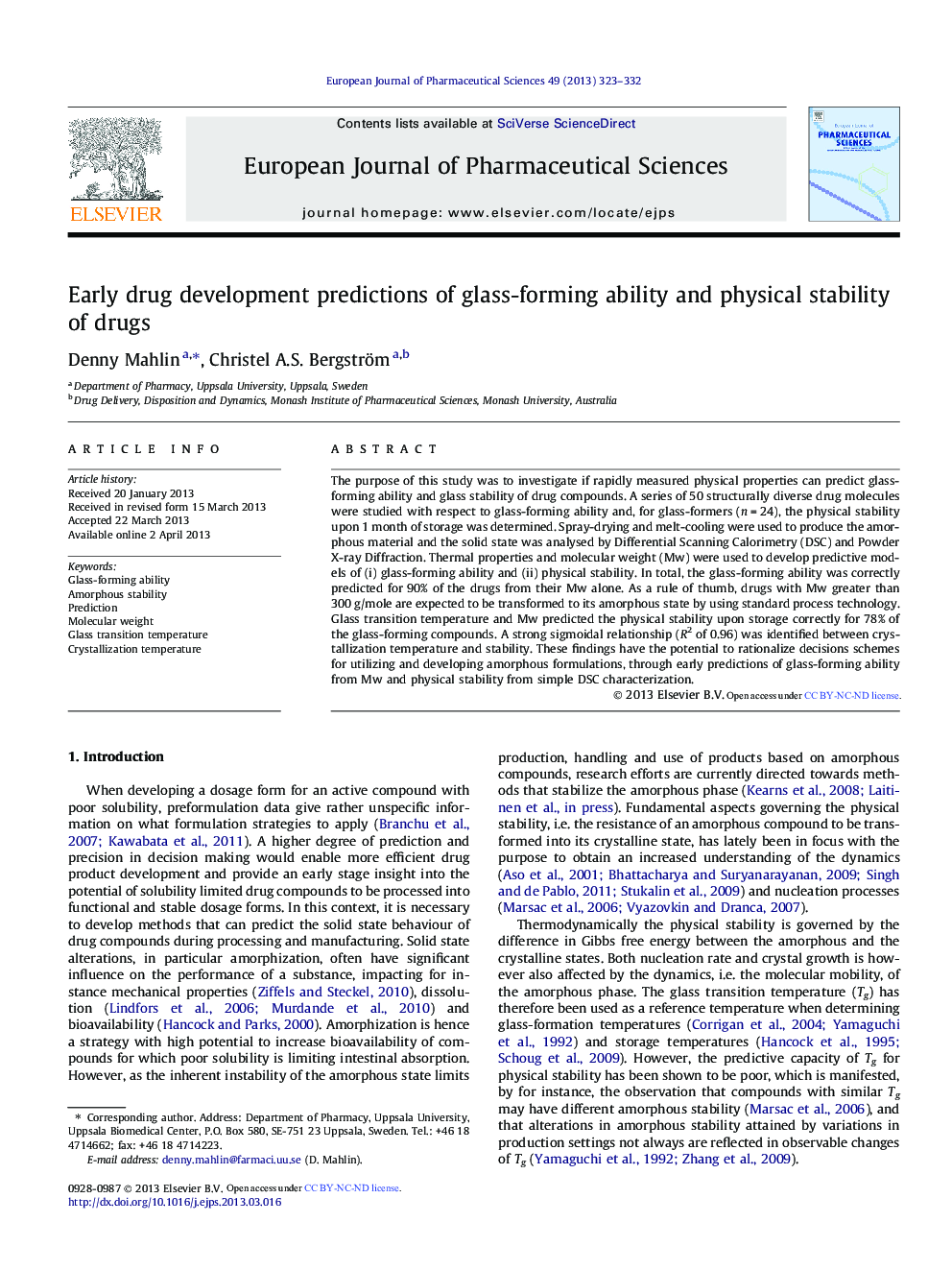| Article ID | Journal | Published Year | Pages | File Type |
|---|---|---|---|---|
| 5810133 | European Journal of Pharmaceutical Sciences | 2013 | 10 Pages |
The purpose of this study was to investigate if rapidly measured physical properties can predict glass-forming ability and glass stability of drug compounds. A series of 50 structurally diverse drug molecules were studied with respect to glass-forming ability and, for glass-formers (n = 24), the physical stability upon 1 month of storage was determined. Spray-drying and melt-cooling were used to produce the amorphous material and the solid state was analysed by Differential Scanning Calorimetry (DSC) and Powder X-ray Diffraction. Thermal properties and molecular weight (Mw) were used to develop predictive models of (i) glass-forming ability and (ii) physical stability. In total, the glass-forming ability was correctly predicted for 90% of the drugs from their Mw alone. As a rule of thumb, drugs with Mw greater than 300 g/mole are expected to be transformed to its amorphous state by using standard process technology. Glass transition temperature and Mw predicted the physical stability upon storage correctly for 78% of the glass-forming compounds. A strong sigmoidal relationship (R2 of 0.96) was identified between crystallization temperature and stability. These findings have the potential to rationalize decisions schemes for utilizing and developing amorphous formulations, through early predictions of glass-forming ability from Mw and physical stability from simple DSC characterization.
Graphical abstractDownload high-res image (59KB)Download full-size image
